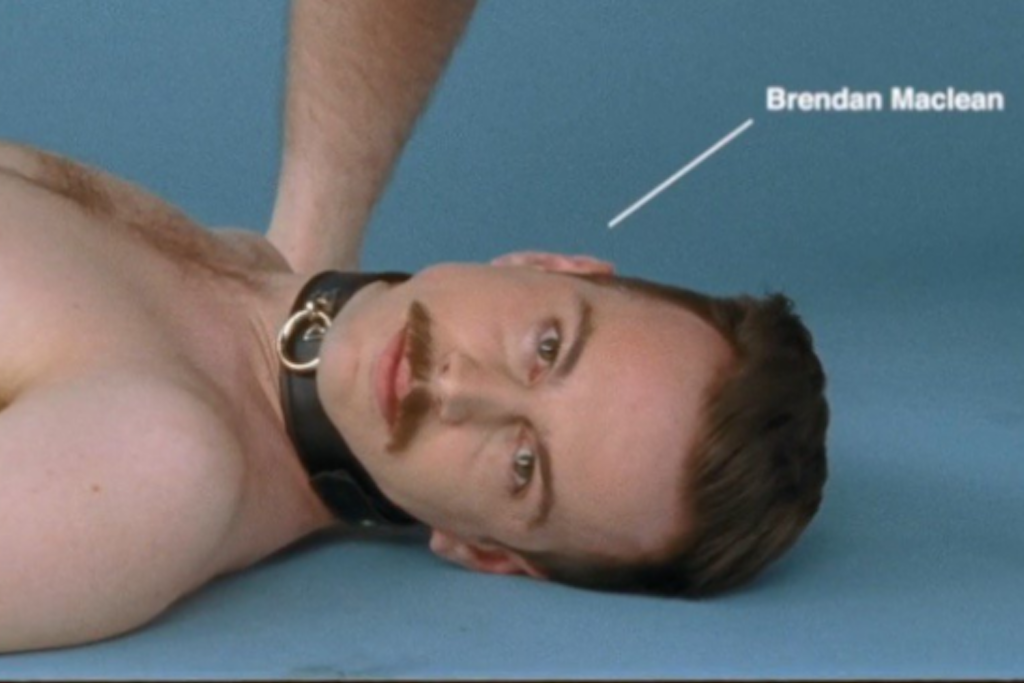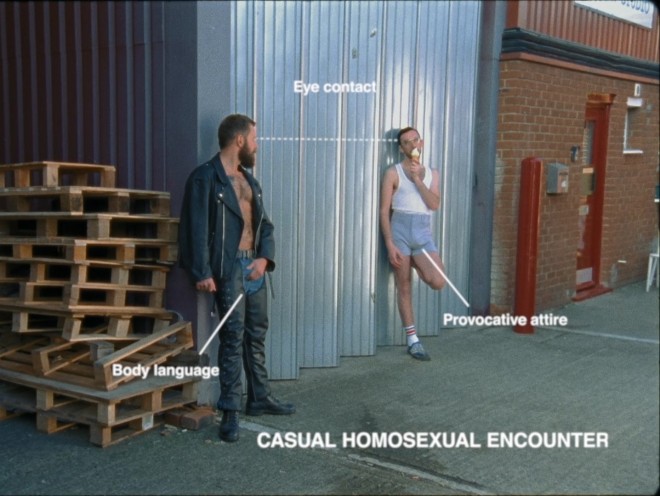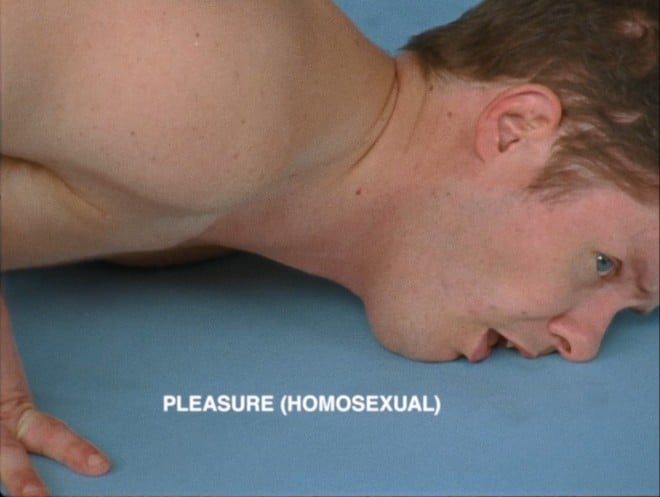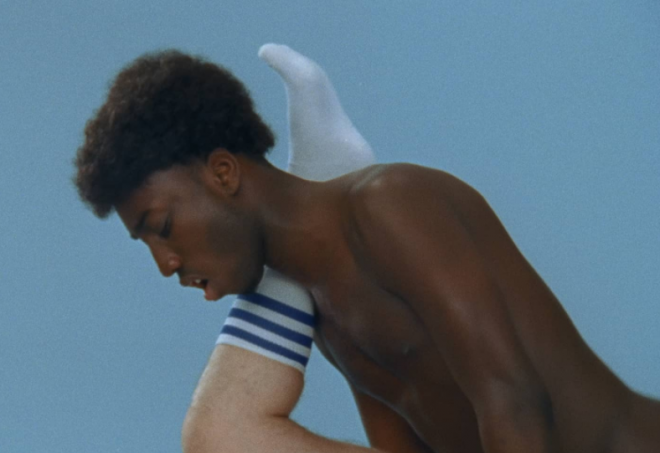Brendan Maclean Wants You To Stop Being Such A Prude About Gay Sex
“This is real. This happens. It will not be going away ever, so deal with it.”

Everyone from religious institutions to the mainstream media to homophobic politicians have historically stifled expressions of queerness. Though society has made leaps in accepting, or even just tolerating, the presence of gay (and LBTIQ) people, homosexuality still remains a sketchy subject for some — which has only empowered others to broadcast it for the masses.
One artist publicising these kind of displays of queerness is Australian musician, actor and self-proclaimed “degenerate filth” Brendan Maclean. Maclean recently released an extremely NSFW music video for a new song titled ‘House Of Air’ (watch if you dare). He describes the work as “an anthropological study of gay semiotics, taxonomies and sexual behaviours”, and the response was far more volatile than that description may lead you to believe.
The video for ‘House of Air’ features demonstrations of visual coding used by homosexual men in the ‘70s, and was adopted from a renowned 1977 photo-essay by Hal Fischer called Gay Semiotics. Fischer’s essay was published when homophobia was particularly rampant. He displayed the identifiers which homosexual men used to safely find partners in public spaces — handkerchiefs kept in either the left or right pockets and piercings in certain earlobes to indicate one’s sexual preferences.
“Many of the set-ups are almost lifted from the photo collection,” Maclean tells me. “We cast models who could naturally pull off a ‘70s aesthetic. I’m lucky moustaches are back in” — [author note: debatable] — “and then tried to bring Fischer’s photo collection to life. It was very important to keep that ‘70s feel, which is why we used 16mm film, because that is where Gay Semiotics really took off: in the S&M culture of San Francisco.”

The video attempts to pay homage to not only Fischer’s cultural analyses of the time, but also to the sensual acts that accompanied said sexual identifiers. As a result, it was removed from YouTube after little more than a week. But not before racking up almost one million views, a reaction video from YouTube megastar PewDiePie — and a thunderous hate-cloud of vitriolic comments and vicious bile.
“When PewDiePie included us in a reaction video, things ramped up to a pretty scary place. I went to my e-mail three times to find my password had been changed; there was no platform of mine that wasn’t swamped with death threats and attempts to find my address,” Maclean says. “Frankly we were all rather relieved when it was pulled from YouTube because the fun of the video was completely being swallowed up by disgusting bigotry, homophobia, racism and — despite none of us being Jewish — this horrid anti-Semitism.”
What’s bizarre about this reaction, is that it’s in response to a video that does nothing more or less than display the antics of the ‘70s gay man in almost cartoonish fashion. It depicts gay semiotics with drawn-in diagrams, and poses models in the antiquated attire of the era as you might see in an ASOS catalogue. The video takes the same approach for the sexual behaviour; it presents everything in an academic fashion.
That’s what man-on-man anilingus looks like. That’s fisting… And yet it’s been unrelentingly and insidiously shat on (so to speak). The hatred and vitriol is ironic, in a way. A music video paying homage to the visual coding designed to avert homophobia went on to be savaged by rabid homophobes.

Maclean’s video certainly depicts a slightly less ‘normalised’ queerness, with S&M being not everyone’s cup of chai. But it is a queerness which has existed throughout history nonetheless; one which many partake in, and one that exists to this day, whether straight audiences like it or not.
“My video is essentially a slap-back on behalf of all queer artists who are repeatedly being told where to draw the lines on their queerness,” Maclean says. “Perhaps you’ve been told not to ‘be so gay’ or ‘be a little bit more normal’ or, as I’ve been told, to ‘try and attract a more heterosexual audience’ to my shows.”
‘House of Air’ is a kind of response to the fact gay men are rarely allowed to eroticise themselves in mainstream culture, rather existing solely as the hairdresser, the quirky uncle or the sanctified and polo-necked father with an adopted child and white-picket-fence home in the suburbs. As Maclean puts it, “the conservative community only like to hear or see gays in art when we are being beaten up or are a cheery token friend in a bad sitcom — and I refuse to accept that narrow and misguided storytelling device”.

Through vivid depictions of gay sexuality, Maclean is pushing the boundary of what is ‘acceptable’. It’s designed to challenge the people who watch explicit straight sex scenes in The Vampire Diaries without flinching, but feel compelled to complain online about a gay love scene from How To Get Away With Murder (a particularly homosexual endeavour for mainstream TV caused controversy earlier this year).
There are still so many straight people who ‘don’t mind gay people, but just don’t want to know what happens in the bedroom’, but simultaneously regale one another with sordid details of their illicit affairs.
It’s for those precise reasons, Maclean contends, that expressions of queerness in the media need to be embraced and celebrated. “Queer visibility is about presenting the topics others may feel uncomfortable with and saying, ‘Well, this is real. This happens. It will not be going away ever, so deal with it’.”.
Hi homo advertisers, can we quit the, "Let us marry because some of us are doctors and totes normal." That's not progress, that's complying.
— Brendan (@macleanbrendan) February 14, 2017
I’m with Brendan. Queers must remain visible in both the media and entertainment, showcasing all of the behavioural quirks and historical nuance that has existed throughout our history. There’s nothing wrong with showcasing our lived experience; our work serves as defiant declaration that we exist. We have conducted our business behind closed doors for centuries. We’re not willing to hide away anymore.
–
You can watch ‘House of Air’ here or support Brendan Maclean’s future projects here.
–
Brandon Cook is a writer and photographer from Melbourne. You can find them on Twitter here.